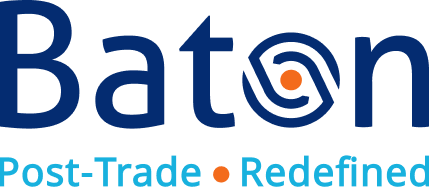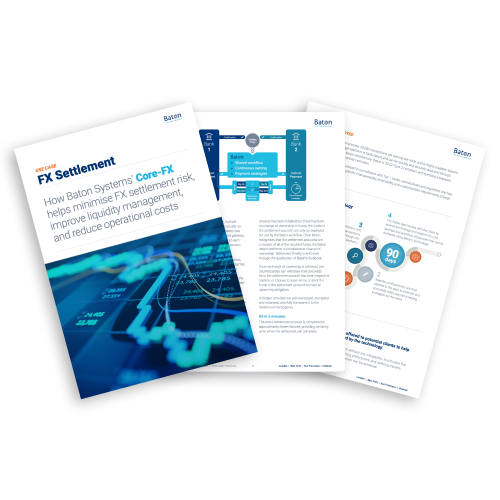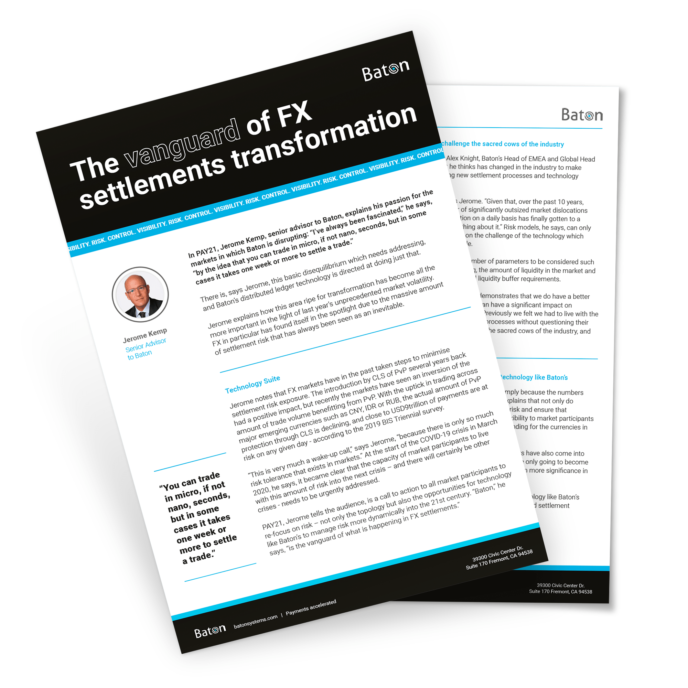FX Settlement with Core-FX: Collaborative, Flexible and Secure
Increase liquidity efficiency and minimise FX settlement risk with Baton’s DLT-powered on-demand, netting and PvP settlement capabilities
“Since 2018, HSBC FX Everywhere has used Baton’s Core FX technology to settle 16 million FX trades across 13 different currencies totalling US$8.1 trillion.”
Mark Williamson, Global Head of FX & Commodities Partnerships & Propositions at HSBC, March 2024
Baton’s DLT: $13T+ Settled to date
Baton’s live distributed ledger technology (DLT) enables the secure, on-demand orchestration of Payment-vs-Payment (PvP) settlement for billions of dollars every day.
To enhance liquidity efficiencies, cut costs, and minimise settlement risks banks need the capabilities to efficiently net and settle FX transactions across currencies with the speed, certainty, and security of atomic atomic settlement via PvP.
Baton’s enterprise-grade DLT-inspired Shared Permissioned-Ledger, the powerhouse behind our Core-FX solution, delivers the resiliency, transparency and speed required. This collaborative solution provides continuous, automated netting, seamlessly integrated with on-demand, instantaneous PvP settlement – at a gross, net, or split level – across major and emerging market currencies.
The result: FX post-trade processing that’s faster, safer and automatically synchronised. Award-winning technology designed to enhance liquidity efficiencies and minimise settlement risk.
Accelerating Global Access to Atomic Settlement via PvP with OSTTRA
Baton’s distributed ledger technology powers OSTTRA’s FX PvP settlement orchestration service. Discover how we’re collaborating to build a settlement network designed to increase global access to PvP settlement for all market participants.
Real-time Technology Built for the Future of FX Post-Trade:
Discover how Baton’s Shared Permissioned-Ledger is Powering a Digital Settlement Network Supporting Real-time Payments Across both Fiat and Digital Currencies:
On-demand, Atomic FX Settlement via PvP
In partnership with OSTTRA, we’re enabling institutions to benefit from FX PvP settlement with legal finality and synchronisation. Gain control of settlement cycles and collaborate with counterparties to execute on-demand programmable settlements when they work best for you.
Streamline workflows, improve liquidity management, and reduce settlement risk and FX processing costs.
Enhanced Funding and Liquidity Management
Streamline cross-border payments with automated netting, dynamic payment splitting and synchronised settlement timings to align with liquidity availability.
These features enable settlement participants to alleviate pre-funding requirements and liquidity pressures, and enhance funding efficiencies.
Transparency and Collaboration
Seamlessly collaborate with counterparties and benefit from complete transparency across the entire FX post-trade process – from trade affirmation to atomic, PvP settlement.
Every transactional workflow is securely captured and hashed, delivering the clarity, trust, and confidence that financial institutions demand.
Unmatched Flexibility and Choice
Decide whether to net or split cross-border settlements, pre-schedule settlement times with counterparties, and complete PvP transactions in just minutes. Decide where you want to settle and using your preferred settlement asset – commercial bank money, a digital record of funds held at the central bank or tokenised commercial bank funds. Settlement options now include the flexibility to select Fnality or Partior for one or both settlement legs and around-the-clock settlement orchestration.
Achieve faster, seamless, and risk-free settlements without the need for an intermediary or unnecessary delays and enhance liquidity efficiencies.
Scalable and Interoperable DLT
Providing a scalable and interoperable infrastructure, Baton’s Shared Permissioned-Ledger technology is empowering networks that can easily integrate with providers and extend settlement opportunities across fiat and digital currencies.
Built for resiliency and optimised to support the high-throughput demands of leading financial institutions, the technology is designed to run seamlessly on industry-standard hardware in the cloud.
Increase settlement capacity
Increase revenues by reducing settlement risk, maximising netting to optimise liquidity usage, and improving settlement line efficiency.
With the automated capabilities to execute these strategies with ease, institutions can optimise capital usage with funds that would otherwise be tied-up in buffers, expand their risk capacity, and explore new client and business opportunities.
“With real-time, PvP settlement across both fiat and tokenised assets, this service gives institutions a smarter way to manage liquidity, reduce risk, and unlocks new opportunities to optimise capital across global markets.”
Humphrey Valenbreder, CEO, Partior
Liquidity Optimisation Made Simple
Traditional atomic settlement via PvP processes tie up valuable liquidity for hours, creating funding and liquidity challenges. Through our partnership with OSTTRA, our DLT-powered PvP process enables settlement participants to:
- Execute PvP settlements in a matter of minutes, at the times that suit the settlement participants.
- Align settlements seamlessly with funding and liquidity cycles across global markets and time zones.
- Introduce unprecedented efficiency by dynamically netting and splitting to minimise funding requirements.
- Settle without pre-funding – freeing up working capital to focus on business priorities.
Empower your institution to leverage its liquidity smarter and more strategically.
Compliance with FX Settlement Risk and Intraday Liquidity Management Requirements
Here are just some examples of the multiple recent regulatory initiatives Baton’s technology can help firm’s to address:
-
Jan 2025: Updated FX Global Code
Updates to Principles 35 and 50 emphasise atomic settlement risk mitigation practices promoting PvP settlement and increased netting.
-
Nov 2024: ECB on Intraday Liquidity Risk
European Central Bank (ECB) published a series of sound practices for managing intraday liquidity risk. Discover how Baton simplifies ECB intraday liquidity compliance: Read the white paper.
-
May 2023: ECB Supervision Newsletter
ECB highlighted the importance of settling FX transactions using PvP to eliminate principal risk.
-
Mar 2023: BIS CPMI’s PVP Report
Bank for International Settlements’ Committee on Payments and Market Infrastructures (CPMI) published a report on “Facilitating increased adoption of payment versus payment (PvP)”
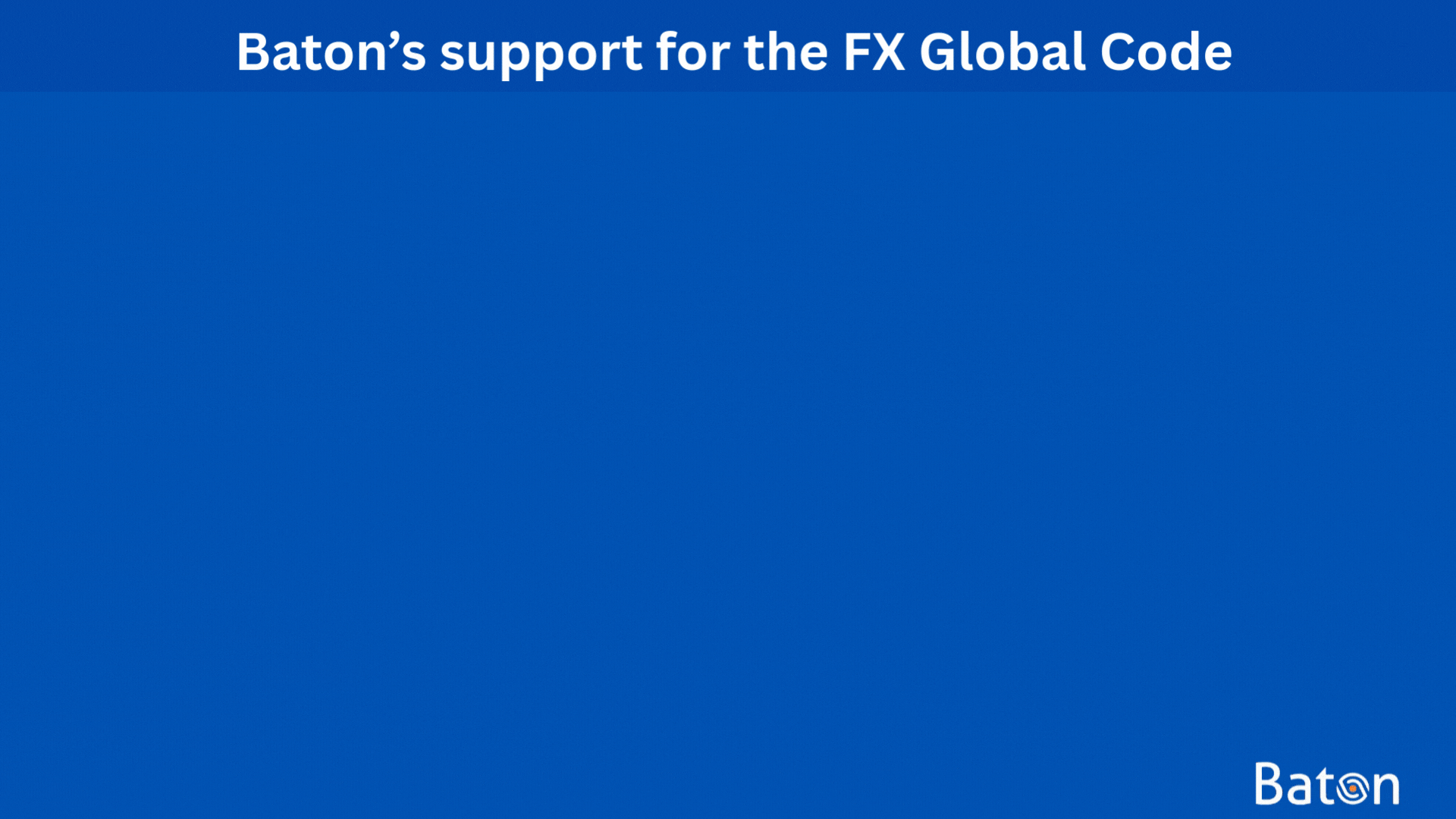
How Baton’s technology supports the FX Global Code
Take Control of FX Settlement Today
Say goodbye to manual netting, operationally intensive payment splitting processes and slow settlement cycles, and join the financial institutions trusting Baton’s technology to power their FX post-trade operations. Whether you’re looking for greater flexibility in settling FX transactions, reducing settlement risk and operational complexity, optimising liquidity, or achieving unparalleled transparency, Baton has you covered.
It’s time to transform your FX operations with speed, real-time visibility and control.
Learn more about how our technology offers practical, scalable solutions to help institutions effectively manage and control atomic settlement risk
THESTATISTICS
84%
Pretium suspendisse sit arcu eu.
84%
Pretium suspendisse sit arcu eu.
84%
Pretium suspendisse sit arcu eu.
84%
Pretium suspendisse sit arcu eu.
Latest Announcements:
Core-FXat a Glance
Further reading, reference material, white papers and industry articles.
Core-FX® Solution Use Case
FX: How Baton Systems’ Core-FX helps minimise FX settlement risk, improve liquidity management, and reduce operational costs.
Baton Core-FX: Transforming FX Settlements
“This is going to completely revolutionise the world of FX settlements,” says Alex Knight, Baton’s Head of Sales in PAY21 October. Alex presents Baton Core-FX, a solution that gives all market participants a fast and secure platform for the safe settlement of their FX trades.
The vanguard of FX Settlements transformation
Jerome Kemp, senior advisor to Baton, explains his passion for the markets in which Baton is disrupting.
Learn about Baton's CORE solutions for FX Settlement, Liquidity and Collateral Management
Real-time Payment and Settlement Control
Reduce funding costs, counterparty and payment risk with real-time payment intelligence and enterprise-wide payment control
Real-time Intraday Liquidity Management
Optimise intraday liquidity use, increase financial resiliency and reduce intraday funding costs with real-time visibility, traceability and control
Automated and Optimised Collateral Management
Increase efficiencies, optimise allocations and expedite asset movements across major venues
